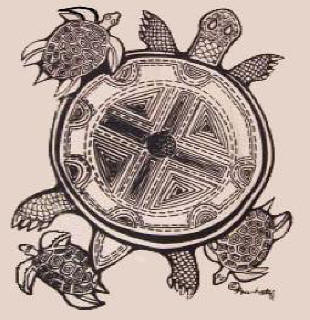 |
LITR 4231 Early American
Literature Research Posts 2014 (research post assignment) Research Post 1 |
 |
Laura Tompkins
March 26, 2014
What Can We Learn From the Trail of Tears?
I knew very little about the Trail
of Tears. I selected this particular topic because I was born in Seattle but
my family moved when I was eight. It is the most beautiful part of the country,
just like Chattanooga, which was part of the Cherokee land. I have always been
interested in Native Americans but after moving, I had to study Texas history. I
know that President Andrew Jackson and his administration had something to do
with what happened to the Cherokee Nation and it involved
Manifest Destiny but I did not learn about that in school.
When studying history, we learn that events are complicated. In
An American Betrayal, Smith introduces the reader to John Ridge and
Elias Boudinot, two young Cherokee men whose fathers were successful businessmen
in the white community. They were part of a small group of Cherokee elite who
wanted to become “acculturalized” with whites (Smith 31) and so they decided to
go to a Christian college. The two men were welcomed into the community until
they fell in love with two young white women and wanted to marry. Almost all of
the young women’s families and supposed friends were against the marriages, but
both couples married despite the vicious opposition.
Even though Ridge and Boudinot experienced this racism, they still wanted
to assimilate with the white community. They were part of a minority of the
Cherokee nation called the Treaty Party, which accepted money from the federal
government to give up land under the Treaty of New Echota2. Other
groups of Cherokees wanted to move west to get away from the new settlers and
others wanted to stay and fight to keep their land.
The Cherokee nation originally had treaties with the United States from
as early as the 1790’s but with new settlers needing land and the discovery of
gold, the government would void these treaties and in 1830 Congress passed the
Indian Removal Act. The Supreme Court determined in Worcester v. Georgia that
the Cherokee nation did indeed have the right to treaties under the Constitution
but President Andrew Jackson chose not to enforce this reversal. Under President
Martin Van Buren, the process of rounding up the Native Americans began in 1838
and the forced migration of the Five Civilized Tribes to what is now Oklahoma.
Manifest Destiny is hard to define. One could say that it is American
exceptionalism but that is another vague term. Scott references the idea of
American destiny as going back to John Winthrop, the Governor of the
Massachusetts Bay Colony, when Winthrop states, “We are entered into Covenant
with him for this work” to mean that it was their mission or destiny to go to
the New World to walk with God3. He also mentions Jonathan Edwards referring to
the “Second coming of Christ…would begin in America” so this idea that the
country started with a Godly mission went horribly wrong when the government
began to take land away from Native Americans.
Works Cited
Daniel Blake Smith,
An American Betrayal: Cherokee Patriots and the Trail of Tears (New
York: Henry Holt and Company, 2011), 1-73.
http://www.nationaltota.org/the-story/
Scott, Donald M. “The
Religious Origins of Manifest Destiny.” Divining America, TeacherServe©.
National Humanities Center. March 26, 2014.
<http://nationalhumanitiescenter.org/tserve/nineteen/nkeyinfo/mandestiny.htm>
|
|
|
|


